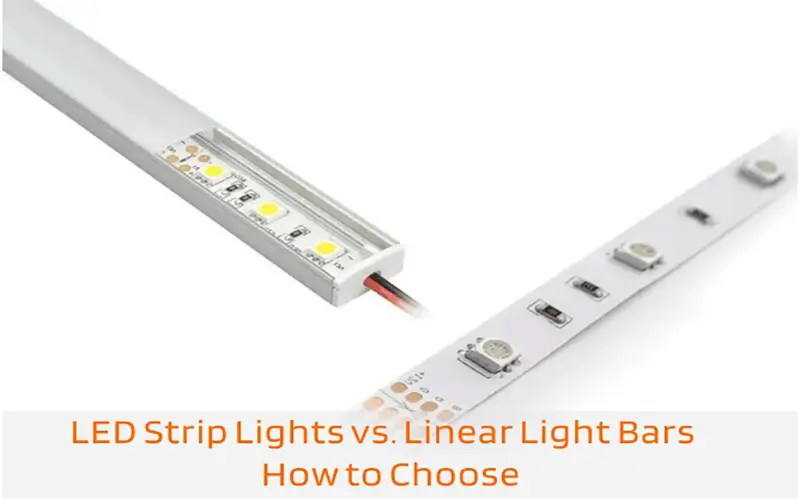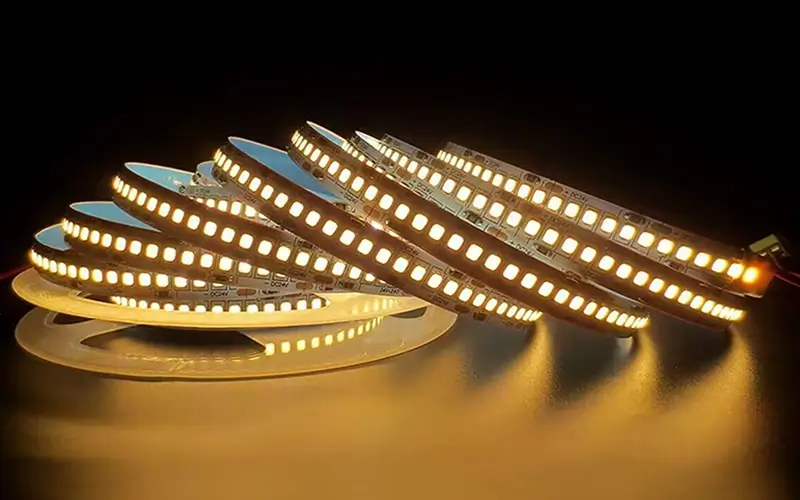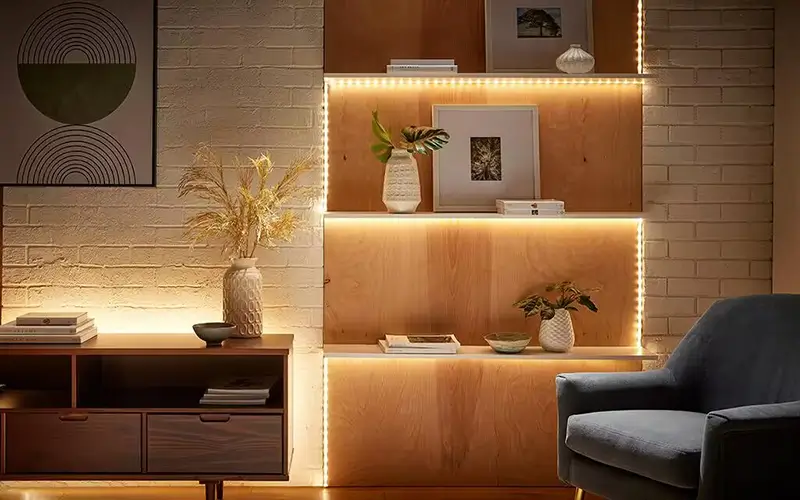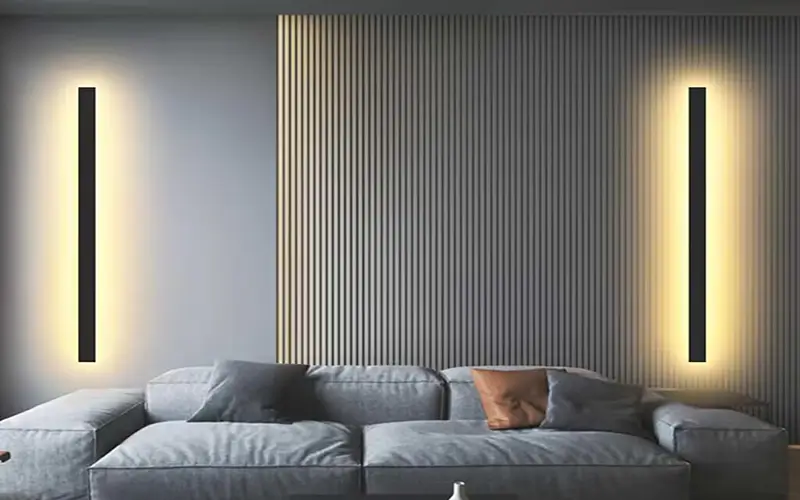
With the rapid development and innovation of the LED lighting industry, LED lights have completely changed our daily lives. LED strip lights vs. linear light bars are very popular and have slowly become an excellent choice for most lighting applications. In this article, we will analyze the definition, functions and excellent uses of LED strip lights and linear light bars. It helps you make the most appropriate choice.
What is an LED Strip Lights?
LED strips can also be called LED tape or LED ribbon. It is composed of small LED chips on a flexible, thin circuit board. LED tape can be customized to a variety of lengths, colors and waterproof levels to choose from.
The application of LED strip lights can be bent, cut, and welded at will. It usually has adhesive backing and mounting buckles, making it very easy to install. Suitable for a variety of indoor and outdoor lighting applications.

What are a Linear Light Bars?
Linear light bars are a type of lamp with a slender appearance. It features an array of LED modules or tubes housed in a metal or plastic housing. It is different from soft LED strip, and the Linear light bars are rigid.
Linear light bar can also provide uniform, glowing light everywhere. Mainly used for task lighting, accent lighting, and commercial lighting. Most of them are 12V and 24V, but there are also a few linear lights that are 120V.

What is the Difference between LED Strip Lights vs. Linear Light Bars?
LED light strips and linear lights bars have many similarities, but each has its own advantages and disadvantages. The following are their respective advantages and disadvantages:
Advantages of LED Strip lights
- Versatility: LED light strips are available in a variety of colors, color temperatures, and brightness levels for customized effects.
- Flexibility: It can be bent and adapted to various shapes and surfaces, making it ideal for curved or irregular installations.
- Wide range of applications: Available in non-waterproof and waterproof grades, suitable for indoor and outdoor lighting projects.
- Easy to install: The LED light strip adopts adhesive backing and mounting buckles, making it very simple to install.
Disadvantages of LED Strip Lights
- Brightness Limitations: LED light strips provide sufficient brightness for most applications, but their brightness is not ideal for high-intensity lighting requirements.
- Heat Dissipation: LED strips can generate heat if the brightness is too high. It needs accessories to help dissipate heat.
Advantages of linear light Bars
- High Brightness: Linear light strips are capable of producing intense brightness, making them ideal for task lighting and commercial applications.
- Durability: With a hard protective shell, the linear light strip is highly resistant to physical damage, moisture and dust.
- Uniform light distribution: Linear light strips often have built-in optics or reflectors that distribute light over a wide area. and reduces glare and maximizes coverage.
Disadvantages of linear light Bars
- Hard Case: Unlike LED light strips, linear light strips are more rigid. It cannot be bent or sheared, limiting its mounting options.
- Uniformity: Since the size and appearance of the linear light bar are fixed, they cannot be changed at will.
Where can I Install LED Strip Lights?
LED strip lights are very versatile and you can install them almost anywhere.
- Architectural characteristic lighting, building exterior walls, hotels, art galleries, etc.
- Residential lighting, bedrooms, under cabinets, display cabinets, bookshelves, etc.
- Outdoor lighting, decorative lighting for parties, events and outdoor spaces.
- Commercial lighting, ambient lighting for work areas and rest areas.

Where can I Install Linear Light Bars?
Linear light bars are ideal for applications requiring high intensity and focused lighting. Mainly commercial and industrial lighting.
- Commercial and retail environments such as supermarkets, warehouses and showrooms.
- Industrial facilities including workshops, factories and manufacturing plants.
- Outdoor areas such as parking lots, sidewalks, and building exteriors.
- Task lighting for workbenches, assembly lines and production areas.

How to Correctly Choose LED Strip Lights vs. Linear Light Bars?
When you’re choosing lighting for your lighting project, whether that’s LED strips or linear light bars, consider the following factors:
The purpose of lighting
Whether it is commercial or residential lighting, the lighting environment and purpose.
Brightness
Determine the lighting level you need, and then make sure you choose LED strips or linear light bars.
Color temperature
Choose a color temperature (warm white, cool white, daylight) that complements the mood and functionality of the space.
Length and Dimensions
Measure the mounting area and select an LED strip or linear light bars that fits the available space without extensive cutting or modification.
IP rating
If installing outdoors or in an environment prone to moisture, choose an LED strip lights or linear light bar with the appropriate IP rating.
Dimming
Determine if your lighting requires dimming, or advanced dimming and color-changing features.
Summarize
Based on our analysis, both LED strip lights and linear light bars have their own advantages and are suitable for different lighting applications. Versatile, flexible and easy to install. LED light strips are ideal for accent lighting, task lighting and decorative lighting in residential and commercial settings. Linear light strips, on the other hand, offer high-intensity lighting and durability, making them ideal for critical commercial, industrial, and outdoor environments. You can choose the right plan based on your requirements and preferences.
FAQs
LED strips consist of small LED chips mounted on a flexible circuit board. It can be bent and sheared. Linear light strips, on the other hand, are elongated light fixtures that house multiple LED modules or tubes arranged in a linear configuration. Its dimensions are fixed and it cannot bend.
LED strip lights offer flexibility and versatility for residential lighting, architectural lighting, and most commercial lighting. Linear light strips, on the other hand, offer high-intensity lighting and durability, making them ideal for commercial, industrial, and outdoor applications.
For home lighting, LED light strips would be more suitable. Top choice for its flexibility, ease of installation, and ability to customize lighting effects. Whereas linear light strips may be better suited for specific areas that require intense and concentrated lighting, such as a home office or workshop.
Yes, LED strip lights and linear light bars can be used together. Because their lighting purposes are different, and the lighting effects that create a sense of hierarchy are also different. However, proper planning and integration are critical to ensure compatibility and functionality.
LED strip lights usually use adhesive backing and mounting buckles for easy installation. It supports cutting to fit a specific area. Linear light bars may require more planning and expertise to install, especially in large or custom applications.
